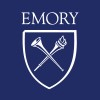
Pterygomaxillary Disjunction With Interpositional Y-shape Plate in Patients With Temporomandibular...
Temporomandibular DisorderTemporomandibular joint internal derangement (TMJ ID) is the most frequent type of temporomandibular disorder (TMDs)which is managed by different therapeutic modalities. it begins with conservative methods like medical treatment, physiotherapy, thermotherapy, and bites appliance therapy. Surgical intervention is a controversial issue in cases not responding to conservative methods. A novel minimally invasive surgical technique which is extracapsular trans oral (Pterygomaxillary disjunction) has been advocated as a minimally invasive extracapsular technique that preserves TMJ integrity.

Standard Care With LLLT & Myofascial Release Versus Standard Care Alone in Pregnant Women With Temporomandibular...
Temporomandibular DisorderThis study will investigate a novel approach to treat pregnant women with tempromandibular disorder using a combined method of low level laser therapy, myofascial release and standard care versus standard care alone. It's hopeful that the results of this study can fill the gap of knowledge surrounding the conservative treatment options for TMD in order to help patients restore their oral function properly and promote new ways of addressing TMD.

The Influence of a Stabilization Splint on the Body Posture
Temporomandibular DisordersCraniomandibular Disorders3 moreThe study was designed to investigate a possible influence of an occlusal stabilization splint on the body posture in TMD cases and controls. Interocclusal appliances or occlusal splints are therapeutic devices that are most frequently used in the treatment of TMD. Changes of the mandibular position and occlusal equilibrations are assumed to have an impact on the general body posture.

The Platelet-Rich Plasma in the Therapy of Temporomandibular Disorders
PRPTemporomandibular Disorder2 moreThe Platelet-Rich Plasma intramuscular injections into the masseter and temporalis muscle were performed to reduce painful temporomandibular disorder symptoms,such as myalgia, myofascial pain and myofascial pain with referrals. Patients(n=120) were randomly divided into two groups: experimental(n=60) and control group(n=60). In controls injections with 0,9% NaCl were performed. Pain intensity was measured with NPRS (numeriic pain rating scale, 0= no pain, 11= the worst pain that one can imagine) before(0 day), during(10 day) and after(20 day) the therapy with PRP injections.

Comparison of Therapeutic Effects of Trigger Point Injection and Twin Nerve Block in Chronic Myofascial...
Myofascial Pain - Dysfunction Syndrome of TMJTrigger Point Pain2 moreTo see if there is there any difference in the treatment outcomes/results such as changes in pain intensity in patients with myofascial pain who have been treated with trigger point injections or twin block?

Effectiveness of Cervical Treatment in Wind Musicians With Temporomandibular Dysfunction
Temporomandibular Joint Dysfunction SyndromeTemporomandibular dysfunction (TMD) consists of a series of multifactorial signs and symptoms that occur in the orofacial region, with pain being the most common symptom. There is a close biomechanical and anatomical relationship between the cervical region and the temporomandibular joint (TMJ) through the trigemino-spinal nucleus. Objectives: To comparatively assess the improvement in subjects with TMD when adding cervical manual therapy to a postural treatment. Additionally, to determine if both cervical treatments separately produce changes in the TMJ. Materials and methods: An experimental study of randomized controlled clinical trial type was conducted. The study involved 30 wind instrument players randomly assigned to an experimental group (EG) and a control group (CG). After obtaining consent, measurements were taken for maximum mouth opening (MMO), cervical range of motion, and pain threshold to pressure (PTP) in the masseter and temporalis muscles. Both groups underwent active cervical postural treatment for 4 weeks, and the EG additionally received a cervical manual therapy protocol. An initial assessment was conducted before the intervention, and a final assessment was done one week after the last intervention. The statistical program SPSS was used for data analysis.

Comorbid Painful TMD Among Trigeminal Neuralgia
Trigeminal NeuralgiaTemporomandibular Disorder2 moreAn observational study following up with trigeminal neuralgia patients to understand their comorbid facial pain condition, specifically temporomandibular disorder.

Analysis of the Effects of the Osteopathic Manipulative Treatment in Carriers of Temporomandibular...
Temporomandibular DisorderThe purpose of this study is to determine whether osteopathic manipulative treatment associated to Dentistry care and speech therapy improves pain and function in individuals with temporomandibular disorders.

A Comparison of Arthrocentesis, Arthroscopy and Arthroplasty in the Treatment of Temporomandibular...
Temporomandibular Joint DysfunctionMany patients suffer from a disorder known as temporomandibular joint dysfunction. This disorder has jaw joint pain and limited function as key elements. Many treatments have been advocated over the last 40 years, many of them deleterious. Currently treatment can be divided into four categories. The first is non-surgical and involves vocal rest, soft diet, heat, anti-inflammatory medications, muscle relaxants, splint therapy and physical therapy. All patients benefit to some degree utilizing one or more non-surgical approaches. Controversy exists with respect to which of the next three categories of treatment is ideal. Some advocate arthrocentesis which involves placing two small needles into the joint to allow irrigation and instillation of anti-inflammatory medication. This is a minimally invasive procedure performed under local anesthetic alone or with intravenous sedation. Others advocate arthroscopy which involves placing an arthroscope (a thin tube about 2mm in diameter with optical elements allowing one to see inside a joint) to visualize the inside of a joint. Furthermore the joint can be irrigated, scar bands removed, ligaments stretched and medication instilled. This is performed under a general anesthesia. Depending on the study, success for both arthrocentesis and arthroscopy has been reported to be about 80-90%. Still there are others who recommend arthroplasty which is an open joint surgical procedure that allows the surgeon to enter the joint and directly repair or remove the damaged cartilage disc within the joint. This is performed under a general anesthesia. Similar success rates of 80-94% have been reported. It is clear that some patients only require arthrocentesis, others arthroscopy and others arthroplasty. We currently do not have any real mechanism of predicting which patients will benefit the most from which procedure. This study will enable patients undergoing each procedure to be followed closely with the hope that we can determine objective factors that will allow us to stratify patients into one of the three surgical options: arthrocentesis, arthroscopy or arthroplasty. Our current approach is empiric and typically proceeds from arthrocentesis to arthroscopy to arthroplasty. All patients in this study will be offered the opportunity to have arthrocentesis performed. It is anticipated that a minority will achieve long-term benefit in terms of pain and function. We hope to be able to identify those factors which will predict which patients will benefit so that future patients selected to have arthrocentesis will have much higher success rates. Patients who fail to improve with arthrocentesis or who initially decline that procedure will be offered the opportunity to undergo arthroscopy. It is anticipated that a majority of patients will achieve long-term benefit in terms of pain and function. Again it is hoped that we can identify those factors which will predict which patients will benefit so that future patients selected to have arthroscopy will have even higher success rates. Patients who fail to improve with arthroscopy or who initially decline both arthrocentesis and arthroscopy will be offered the opportunity to undergo arthroplasty provided that clinical and radiographic evidence exists to support the presence of either a diseased or displaced cartilage disc. Our ability to adequately treat patients with temporomandibular joint dysfunction will be significantly improved if we can better stratify patients and follow an evidence based surgical algorithm that provides the greatest opportunity for success while reducing potential complications. Each of these surgical procedures is the standard of care throughout the USA but unfortunately the choice of which procedure to perform is often empiric and guided more by training and surgical experience.

Correlation Between Missing Posterior Teeth and Vertical Dimension Measurements With Temporomandibular...
Correlation Between Missing Posterior Teeth and Vertical Dimension Cephalometric Measurements With Temporomandibular DisordersThe goal of this observational study is to learn about the correlation between missing posterior teeth and vertical dimension cephalometric measurements with temporomandibular disorders in a sample of adult Egyptian subjects in. The main questions it aims to answer are: Is there a correlation between missing posterior teeth and temporomandibular disorders? Is there a correlation between vertical dimension cephalometric measurements and temporomandibular disorders? Participants will be asked for the following:- to give their phone numbers & it will be collected through the orthodontic department patient's database ensuring complete confidentiality. to fill Personal data chart (name, age, date of birth, mobile number, address). to receive Clinical examination to determine number of missing teeth. to receive Clinical examination to diagnose TMD using the DC/TMD. to do Lateral cephalometric radiograph to measure the vertical dimension.
